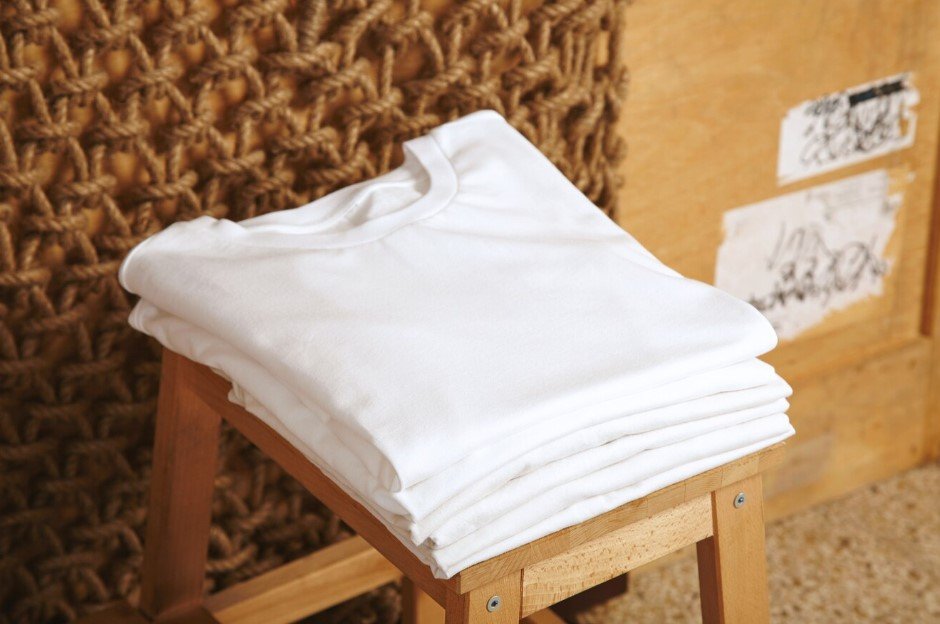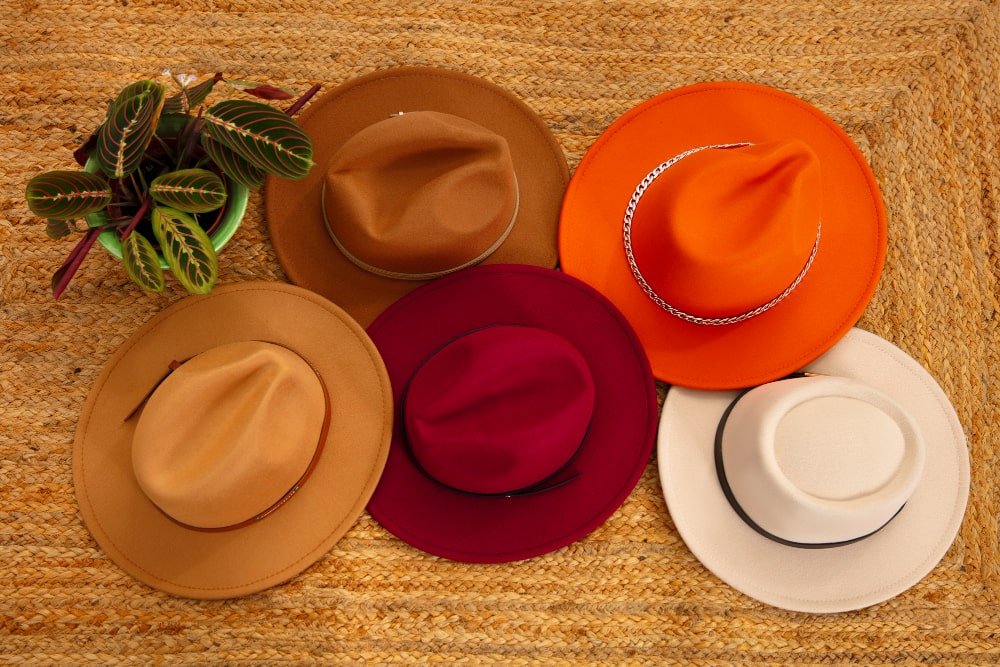T-shirts weigh approximately 150-200 grams. T-shirts are a popular wardrobe staple known for their versatility and comfort.
Table of Contents
Whether you’re dressing for a casual outing or a workout session, T-shirts offer unbeatable comfort and style. But you might be wondering, how much do these fashionable pieces weigh? On average, T-shirts typically weigh around 150 to 200 grams.
The weight can vary slightly depending on factors like material, size, and design. While this may not seem like much, it’s worth considering if you’re carrying a full load of T-shirts or shipping them in bulk. With their lightweight nature, T-shirts are easy to wear and transport, making them a great choice for all occasions.
Factors Affecting T-shirt Weight

Factors affecting t-shirt weight include fabric type, thickness, and design elements. Material composition, such as cotton, polyester, or a blend, influences the weight of the shirt, while layering or embellishments may add more heft. Understanding these factors helps consumers choose the perfect t-shirt for their needs.
Factors Affecting T-Shirt Weight When it comes to buying a T-shirt, its weight is an important factor to consider. The weight of a t-shirt can affect its comfort, durability, and overall feel. In this article, we will explore the different factors that can contribute to t-shirt weight.
Fabric Type
The type of fabric used to make a t-shirt plays a significant role in determining its weight. Different fabrics have varying densities and weights. For instance, a t-shirt made from 100% cotton will generally have a lighter weight compared to one made from a blend of cotton and polyester.
Fabric Thickness
Another important factor that affects t-shirt weight is the thickness of the fabric. Thicker fabrics tend to be heavier while thinner fabrics are lighter. The thickness of a fabric is often measured in terms of GSM (grams per square meter). A t-shirt with a higher GSM will have a heavier weight compared to one with a lower GSM.
Design And Print
The design and print on a t-shirt can also influence its weight. T-shirts with multiple layers of graphics or large prints tend to be heavier than those with minimal or no printing. This is because the ink used for printing adds weight to the fabric. Additionally, the type of printing process used, such as screen printing or digital printing, can also impact the weight of the t-shirt.
Additional Features
Certain additional features can contribute to the weight of a t-shirt. These features include things like reinforced stitching, ribbed collars, and double-layered hems. While these features enhance the durability and overall quality of the t-shirt, they may also add some extra weight. To summarize, the weight of a t-shirt is influenced by various factors such as the type of fabric, fabric thickness, design and print, as well as additional features. Keep these factors in mind the next time you’re shopping for a new t-shirt to find the perfect weight that suits your preferences and needs.
Understanding Fabric Types

T-shirts weigh differently based on the fabric type they are made of. Understanding fabric types is crucial in determining the weight of your t-shirts.
Understanding Fabric Types Cotton Cotton fabric is a popular choice for t-shirts due to its breathability and softness. It’s an organic material that is suitable for those with sensitive skin. The absorbent nature of cotton makes it ideal for hot and humid weather as it wicks away moisture from the body. Cotton t-shirts are comfortable to wear and easy to care for, making them a staple in everyone’s wardrobe. Polyester Polyester fabric is a synthetic material commonly used in t-shirt manufacturing. It is known for its durability and resistance to wrinkles, shrinking, and fading. Polyester t-shirts are valued for their ability to retain their shape and color even after multiple washes. The quick-drying nature of polyester makes it a great choice for athletic wear and outdoor activities. Blend Fabrics Blend fabrics combine the desirable properties of different materials, resulting in t-shirts that offer the best of both worlds. Cotton-polyester blends, for example, combine the breathability of cotton with the durability of polyester, creating comfortable and long-lasting t-shirts. These blends are often chosen for their ability to resist wrinkles and retain shape, making them suitable for daily wear. Other Fabric Options In addition to cotton, polyester, and blends, t-shirts can also be made from a variety of other fabrics such as rayon, linen, and spandex. These fabrics offer unique characteristics that cater to specific needs, including moisture-wicking, lightweight comfort, and stretchability. Understanding the different fabric options allows you to choose t-shirts that best suit your preferences and lifestyle. By understanding the various fabric types used in t-shirt production, you can make informed decisions when selecting the right t-shirt for your needs. Whether you prioritize breathability, durability, or a combination of both, there are fabric options available to fulfill your requirements. The diverse range of materials ensures that there is a t-shirt for every occasion and individual preference.
Fabric Thickness And Weight
When it comes to choosing the perfect t-shirt, fabric thickness and weight are key factors that can greatly impact your wearing experience. The fabric thickness determines the durability, comfort, and overall quality of the garment, while the weight affects the drape and feel of the t-shirt.
Gsm Measurement: Understanding The Numerical Scale
One way to determine the fabric thickness and weight is through the GSM measurement, which stands for grams per square meter. This measurement refers to the weight of the fabric per square meter, indicating how light or heavy it is. The higher the GSM, the denser and more substantial the fabric will be.
Effect On T-shirt Weight: Finding Your Ideal Choice
Ultimately, fabric thickness and weight play a crucial role in the overall comfort of your t-shirt. Let’s take a closer look at how different fabric weights can affect your wearing experience:
- Lightweight: T-shirts with a low GSM, typically ranging from 100 to 150, are considered lightweight. These t-shirts are perfect for hot summer days or when you want a breathable and airy feel. However, they may not provide as much structure or durability as heavier options.
- Mediumweight: T-shirts with a medium GSM, around 150 to 180, strike a balance between lightness and sturdiness. They offer a comfortable fit and are suitable for everyday wear, providing a good blend of breathability and durability.
- Heavyweight: For those who prefer a more substantial feel, heavyweight t-shirts with a higher GSM, typically above 180, are the way to go. These t-shirts offer more structure, warmth, and durability, making them ideal for layering during colder months or for a robust, long-lasting garment.
When choosing the fabric thickness and weight for your t-shirt, consider the climate, the intended use, and your personal preferences. Lightweight t-shirts are perfect for those hot summer days, while mediumweight options offer versatility for year-round wear. Heavyweight t-shirts, on the other hand, provide durability and warmth, ideal for colder temperatures.
Impact Of Design And Print
When it comes to choosing the perfect t-shirt, the weight of the fabric is an important consideration. However, an often overlooked aspect of t-shirt selection is the impact of design and print. The design and printing method can have a significant influence on the overall look, feel, and durability of the t-shirt. Let’s explore the different design and print options available and their effects on t-shirt quality and style.
Screen Printing
Screen printing is a popular and classic technique used for t-shirt designs. It involves transferring ink onto the fabric using a stencil and screen. This method offers vibrant and long-lasting prints that can withstand regular wear and washing. Screen printing allows for bold and intricate designs with sharp edges and vibrant colors. It is ideal for large quantities and provides excellent color opacity on both light and dark fabrics.
Digital Printing
Digital printing, also known as direct-to-garment (DTG) printing, has revolutionized the t-shirt printing industry. Using specialized inkjet printers, this method allows for high-quality prints that can capture intricate details and vibrant colors. Digital printing provides a soft and smooth finish as the ink is directly absorbed into the fabric. It is suitable for complex and multi-colored designs, making it an excellent choice for small quantities or one-off custom t-shirts.
Embroidery
Embroidery is a traditional method of decorating t-shirts with thread. This technique involves stitching the design onto the fabric using a needle and thread or specialized embroidery machines. Embroidery offers a sophisticated and textured look, with designs that are durable and long-lasting. It is commonly used for adding logos, monograms, or intricate designs to t-shirts. Embroidered designs can withstand multiple washes without fading, making them an excellent choice for corporate or promotional t-shirts.
Heat Transfers
Heat transfers, also known as iron-on transfers, involve applying designs to t-shirts using heat and pressure. These designs are typically printed onto special transfer paper and then transferred onto the fabric using a heat press or household iron. Heat transfers allow for full-color designs and can capture intricate details. However, they may not be as durable as screen printing or embroidery. With regular washing, heat transfers have a risk of cracking or peeling over time.
Conclusion:
In conclusion, the design and print method can have a significant impact on the overall quality and style of a t-shirt. Screen printing offers vibrant and durable prints, while digital printing allows for intricate designs and vibrant colors. Embroidery provides a sophisticated and long-lasting option, while heat transfers offer versatility for full-color designs. Understanding the different options and their effects can help you choose the perfect t-shirt that matches your style, longevity, and budget.
Additional Features And Weight
When it comes to choosing the right t-shirt, the weight and additional features play a significant role in the overall comfort and style. Understanding the impact of additional features on the weight of t-shirts can help you make an informed decision when selecting the perfect t-shirt for your needs.
Pockets And Zippers
T-shirts with pockets and zippers tend to be heavier due to the added materials and components. The convenience of pockets and the stylish accents of zippers can enhance the overall look of the t-shirt, but it’s essential to keep in mind that these features can contribute to a slightly heavier feel.
Button-down Collars
Button-down collars can add a touch of sophistication to a t-shirt, but they may also add some weight due to the additional fabric and construction required for this feature. This is an important factor to consider, especially for those seeking a lightweight and relaxed fit.
Hoodies And Sweatshirts
Hoodies and sweatshirts naturally have a heavier weight compared to regular t-shirts due to the inclusion of a hood and the thicker fabric used for warmth and comfort. While ideal for cooler weather, it’s crucial to note that these additional features significantly contribute to the overall weight of the garment.
Trim And Embellishments
T-shirts adorned with trim and embellishments can be visually appealing, but these decorative elements often add weight to the garment. Whether it’s embroidery, sequins, or metallic accents, these details can make the t-shirt heavier and influence its overall feel and comfort.
Frequently Asked Questions On T-shirts Weigh?
How Much Do T-shirts Weigh?
T-shirts typically weigh between 150 to 200 grams depending on the fabric thickness and size.
What Factors Affect The Weight Of A T-shirt?
The weight of a t-shirt is influenced by the fabric type, weave density, and additional design features like graphics or embellishments.
Are Heavier T-shirts Of Better Quality?
While a heavier t-shirt may imply thicker fabric, quality is determined by factors beyond weight, such as fabric durability, stitch quality, and overall construction.
Can The Weight Of A T-shirt Impact Its Comfort?
The weight of a t-shirt can affect comfort by influencing breathability, flexibility, and movement. Lighter fabrics are often more comfortable in warm weather.
How Does T-shirt Weight Affect Shipping Costs?
Since shipping costs are determined by weight, heavier t-shirts may result in higher shipping fees, especially when sending multiple items or internationally.
Conclusion
The weight of T-shirts can vary depending on the material and style. Whether you prefer lightweight or heavy T-shirts, understanding the factors that contribute to their weight can help you make more informed purchase decisions. With this knowledge, you can choose the perfect T-shirt for your comfort and style preferences.




